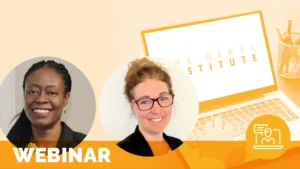Everything I needed to know to be a pediatric emergency room doctor, I learned as a waitress

When I began my career as a pediatric emergency medicine physician, I believed I was prepared to take on any medical emergency. However, I was not prepared to provide a good patient family experience. Throughout my years of training, I was not taught productive ways of interacting with patients and was unaware of how impactful the patient family experience would be. Negative patient family experience scores affected my interactions with patients, my shared decision making and my ability to provide quality care. After working to improve my scores, I focused on skills I obtained in a non-medical setting, as a waitress, and applied them to my patient interactions. These 10 tips, which I have adapted from the hospitality industry, will help with not only improving your patient-family experience scores, but improving your entire interaction with patients in the emergency room or any clinical environment in which you work.
Related content
-
 Culture & Leadership | Staff & Provider Engagement
Culture & Leadership | Staff & Provider EngagementUsing Gratitude to Elevate the Human Experience
In this webinar, the presenters will share how they developed a Gratitude Report as a part of Southcoast Health’s grateful patient program using positive patient feedback, comments, and stories to recognize caregivers that embody the values and service behaviors. The Gratitude Report is a list of employees’ names that have been mentioned by patients and
Learn more -
 Culture & Leadership | Quality & Clinical Excellence
Culture & Leadership | Quality & Clinical ExcellenceImproving Interpreter Services Documentation for Equitable LEP Care
Patients with Limited English Proficiency (LEP) face significant barriers to accessing quality healthcare, leading to disparities in outcomes. Utilizing qualified medical interpreters is essential for bridging these gaps, yet systematic integration of interpreter services remains a challenge for many healthcare organizations. This webinar highlights the journey of an academic health system in New England that
Learn more -
 Culture & Leadership | Infrastructure & Governance | Staff & Provider Engagement
Culture & Leadership | Infrastructure & Governance | Staff & Provider EngagementOwnership at the Frontline: Innovating an Experience Champions Program
Many patient experience teams are small, and it’s hard to do it all. Having an “Experience Champs” program allows us to have multiple hands with one voice influencing all locations. Experience Champs are made up of frontline staff members who are chosen by their leaders as passionate role models. During the last five years, the
Learn more
